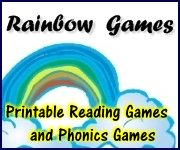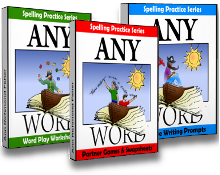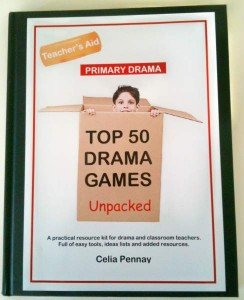Creative Writing Tips
Building a Foundation for Writing in the Classroom
These creative writing tips build a foundation for writing in your classroom. No matter their ages, kids need specific, constructive feedback to know what is working well and what needs improvement. As writing teachers, we must give students feedback that builds on what they know and points them to the next step, especially our students who have gotten off to a rocky start in writing. It's not helpful to tell a struggling writer, "You aren't doing very well." They already know that. What they need to hear is what they can do to improve.
As writing teachers, we must give students feedback that builds on what they know and points them to the next step, especially our students who have gotten off to a rocky start in writing. It's not helpful to tell a struggling writer, "You aren't doing very well." They already know that. What they need to hear is what they can do to improve.
They need to understand that the ideas of the plot may need to be strengthened, or the plot structure itself should perhaps be reorganized. Perhaps a child's unique voice as a writer is missing in the piece, or her word choices are flat and nondescript, her sentences choppy and uneven. Maybe a student needs additional instruction in the proper use of conventions or helped to present neat, attractive pages.
Student writers benefit from creative writing tips based upon trait-driven instruction because traits are specific, are easily taught and reinforced, and make sense. All the scoring guides, sample essays, focus lessons, and activities in the world won't make a difference unless you embrace a philosophy that encourages the creation of confident, capable young writers.
My personal philosophy revolves around these three creative writing tips:
Using a Common Vocabulary Based on Writing Traits
Using the same working vocabulary on a day to day basis develops a foundation for writing instruction and assessment. Breaking a piece of writing down into traits allows us to delve deeply into the text. It enables us to communicate to our students what is working well in their stories and essays and what needs work. I've found such analytic assessment far more useful than any holistic tool that provides only a single score. Using trait-based vocabulary, our children receive rich feedback on their writing.
In the mid-1980s, a group of teachers from Oregon and Montana developed an analytic assessment model fundamental to any writing classroom. Using these traits as creative writing tips among my third and fourth graders, their growth as writers blossomed dramatically:
- Ideas: the meaning and development of the message.
- Organization: the internal structure of the piece.
- Voice: the tone of the piece- the personal stamp that the writer brings to it.
- Word Choice: the specific vocabulary the writer uses to convey meaning.
- Sentence Fluency: the way the words and phrases flow throughout the text.
- Conventions: the mechanical correctness of the piece.
- Presentation: the overall appearance of the work.
Nurturing Process Learning:
Of course, the final product is important. But it's equally important to rediscover the valuing of the writing process, where writing is encouraged and celebrated every day.
Writing is a complex process. To learn how to do it well takes skill, practice, and courage. Determining which skills to teach young writers and when to teach them is a challenge. Think about driving a car. You need to understand how to use the gas pedal, turn the steering wheel, and adjust the mirrors, but there's a lot more to driving than that! Just practicing one part of driving does not make you a driver. Driving makes you a driver. The same is true for writing. Worksheets don't create writers. Writing creates writers. Sure, you can use a worksheet every now and then to reinforce a new skill, but children become good writers by writing often, on a variety of topics, and in a multitude of forms.
In a writing-process centered classroom:
- students work at different tasks at different rates.
- teachers encourage many short, interesting pieces of writing, any of which may lead to longer pieces over time.
- small groups of students work together.
- writing is shared as it is created.
- one piece may lead to another on a new topic.
- failure is an opportunity to stretch and grow.
- typical questions include: Does this work? What else could I try? Will you help me find a better way to say this? What would happen if I rewrote it to show...
Helpful creative writing tip: Ask yourself, if I was a student in my class, what would matter more: (1) writing to get the work finished and turned in, or (2) writing to learn what I want to say and the best way to say it?
Using Criteria to Set Standards:
As a writing teacher, I've found that knowing what "good" looks like helps students succeed as young writers. When we use criteria to assess a draft of a short story or essay, we show our children what they know and can do while pointing the way to further learning. Effective, detailed criteria define what a strong piece of writing looks like and gives students important information about how close they are to meeting specific goals.
Effective criteria:
- are written in easily understandable language.
- use a common vocabulary to build deeper understanding.
- zero in on what's important and attainable.
- define different levels of performance.
- make it easy to observe and document growth.
- are easy for students to remember and apply.
- evolve and are refined over time.
It's my hope that the following links to additional creative writing tips will help you develop a nurturing, process-centered writing community among your students, a classroom that speaks a common language and uses effective criteria for encouraging your young writers' growth.
Enjoy!
The Six Trait Writing Process The writing traits and the writing process itself support one another, flowing as a river from beginning to end.
The Creative Writing Idea Finding a creative writing idea is your students' most important task.
Organize Stories Try these fun hands-on activities and creative writing tips to help your students shape their ideas!
Voice in Writing Help your students put their passion to paper!
Proper Word Choices Choosing those gems for sparkling stories!
Sentence Fluency Teach your students to turn words and phrases into sentences that sound fabulous to the ear!
Writing Conventions Helping Your Students Put Finishing Touches on Their Work.
Kids Publish! Publication is an important step because it solidifies kids' identities as writers.
Return from Creative Writing Tips to Creative Writing ideas and Activities
Helping You Write Across the Curriculum!
copyright 2009-2013 www.creative-writing-ideas-and-activities.com
Our Most Popular Pages
5. Writing a Personal Narritive
10. Elements of Persuasive Writing
Recommeded Resources:
AnyWord(TM) Spelling Practice Series!
Worksheets, games and activities to use with any spelling words. Three volumes in all!
Stop Essay Pain!
LitWorks.com
Resources to help students prepare for literature examinations.
Teach Kids Drama!








